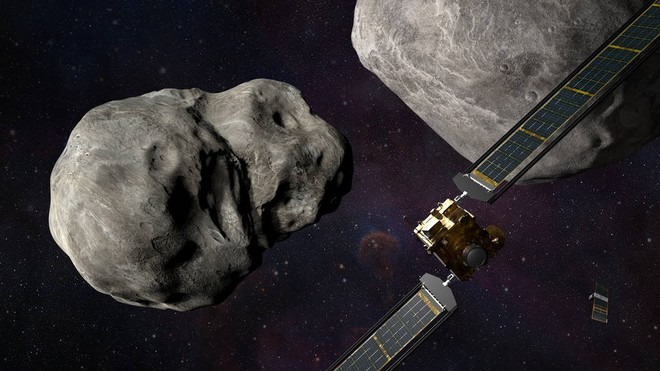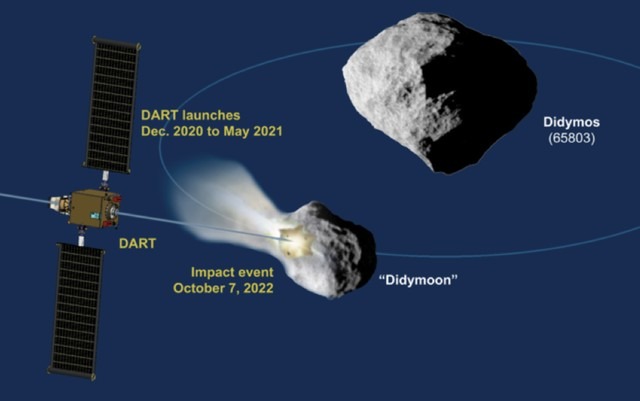“DART” in English means dart, dart, and therefore already suggests the idea of a target, of something to hit. And it is also the acronym of Double Asteroid Redirection Test, the mission of NASA which aims to test the effectiveness of the technologies we currently have in diverting the path of asteroids potentially dangerous with the aim, of course, of averting the impact with our planet.
Exactly, an Armageddon-style scenario, which however as we know has happened and will happen again in the billionaire history of our planet.
But what exactly does mission consist of? This is the first use of the kinetic impact technique, which is a “brutal” approach to the matter, and consists of hurling a large spacecraft at high speed at an asteroid – in this case, binary, that is the couple made up of Didymos and his moon Dimorphous.
DART is launched from a SpaceX Falcon 9 rocket today at 7:21 am (Italian time). NASA defines this mission as “the first major test for planetary defence“.

The asteroid Dydimos has a diameter of approx 780 meters, while that of the moon Dimorphos measure 160.
But is there to worry? No: having said that NASA cautiously considers as “potentially dangerous” any object that is within 7.4 million kilometres of the Earth and that measures more than 140 meters in diameter, for the moment it is not yet a question of saving the planet.
If anything, to understand if the developed technique will prove effective should it be necessary to apply it, one day, in the presence of a concrete threat.
Following the collision with the impactor, the asteroid’s journey should observe a variation of less than 1%, but in any case sufficient on an exponential scale to deviate it significantly: from the study of the effects we will be able to understand the incisiveness of the kinetic impact.



